Scheduled Maintenance
Please be advised that this website will undergo scheduled maintenance on the following dates: •
Tuesday 3rd December 11:00-15:00
During these times, some services may be temporarily unavailable. We apologise for any inconvenience this may cause.
Powfoot, Royal Ordnance Factory, Nitrocellulose Factory
Explosives Factory (20th Century)
Site Name Powfoot, Royal Ordnance Factory, Nitrocellulose Factory
Classification Explosives Factory (20th Century)
Alternative Name(s) Broom Farm
Canmore ID 66510
Site Number NY16NE 58
NGR NY 1610 6564
NGR Description NY 153 660 - 168 658 W/E; NY 165 662 - 163 653 N/S
Datum OSGB36 - NGR
Permalink http://canmore.org.uk/site/66510
- Council Dumfries And Galloway
- Parish Annan
- Former Region Dumfries And Galloway
- Former District Annandale And Eskdale
- Former County Dumfries-shire
NY16NE 58.00 1610 6564
NY16NE 58.01 NY 1618 6564 Farmhouse, Broom Farm
NY16NE 58.02 centred on NY 1595 6583 Explosive Works (West site)
NY16NE 58.03 centred on NY 1665 6575 Explosive Works (East site)
Background History:
Powfoot Nitro-cellulose factory was founded in 1940 by the War Office to make propellants. Nitro-cellulose (comprising a mixture of linters, high-nitrogen guncotton) was supplied from Bishopton and processed into propellants such as Nobel Rifle Neonite and Cannon Powder. Later the site was re-opened to cope with the demands of other wars, including Korea and the Falklands. The propellant side orientated around Nitro-cellulose/Single Base.. The three propellant bases are NC [Nitro-cellulose], NG (Nitro-glycerine] and Picrite (flash/smoke suppressant]. Single base composes only NC. A further (E) part of the works produced TNT and has not been in production since the 1950s.
Powfoot was run by Nobel's Explosives (which is part of ICI) for the Ministry of Defence (and Royal Ordnance, subsequently privatised and sold to British Aerospace). NC processing ceased at Powfoot in November 1992 and the site was vacated by ICI on 1 March 1993. British Aerospace is now decommissioning the site, which involves making it safe, and removing all remaining explosives residue so that the explosives licence can be rescinded. Meanwhile, the factory is an SSSI with five of Britain's amphibious species present.
Most of the buildings on the site are built from composition brick (some marked 'Caledonia') and concrete. The floors in the processing areas are made of concrete, covered with a black 'Veitchy' softening layer (to eliminate the possibility of sparks). Buildings are connected by a narrow gauge railway (mostly on wooden sleepers), carrying bogeys (previously hauled by diesel pugs). These connect with dispatch points linked to the main line siding. However, in recent years all haulage has been by road.
Visited by RCAHMS (MKO), June 1993


















![View from laboratory block [K1] from N.](http://i.rcahms.gov.uk/canmore/l/SC02497687.jpg)
![Detail of 1 of several fireclay roof vents on top of magazine [M3].](http://i.rcahms.gov.uk/canmore/l/SC02497723.jpg)
![Hydraulic Pump House [N1]: view of hydraulic pumping machinery, including 1 of 2 G and J weir of Glasgow units in foreground, and 2 larger unidentified units in background, each powered by British Thomson Houston electric motors.](http://i.rcahms.gov.uk/canmore/l/SC02497736.jpg)
![Press house [P2]: view of Nitrocellulose press.](http://i.rcahms.gov.uk/canmore/l/SC02497739.jpg)






![View from SW of railway dispatch buildings [V1, V2 and V9], latterly converted for road transport. View also shows examples of bogeys used on narrow gauge railway throughout plant](http://i.rcahms.gov.uk/canmore/l/SC02497693.jpg)
![View from N of railway dispatch buildings [V1, V2 and V9] also showing typical example of electrical switchgear box and narrow gauge railway connecting most parts of the factory.](http://i.rcahms.gov.uk/canmore/l/SC02497695.jpg)
![View from ESE of recovered alcohol stand pipes and tanks, with still house [W4] behind.](http://i.rcahms.gov.uk/canmore/l/SC02497698.jpg)
![Elevated general view from ESE of incorporating and press houses [Z2 and P2 respectively], and hydraulic pump house [centre].](http://i.rcahms.gov.uk/canmore/l/SC02497703.jpg)
![View of coating and glazing house [C1] from NE.](http://i.rcahms.gov.uk/canmore/l/SC02497720.jpg)
![View from NW of magazine [M2].](http://i.rcahms.gov.uk/canmore/l/SC02497722.jpg)
![Elevated view from SE of stove house [S5] showing ventilator units.](http://i.rcahms.gov.uk/canmore/l/SC02497724.jpg)
![Hyrdaulic Pump House [N1]: view of hydraulic pumping machinery, comprising 2 large unidentified units, each powered by British Thomson Houston electric motors. Also in the building were 2 small G and J Weir hydraulic pumps. The hydraulic pipework and valves were supllied by Glenfield Kennedy of Kilmarnock, and the power from the engines was stored in 4 accumulators outside the building. Several nitrocellulose processes involved the use of hydraulically operated presses.](http://i.rcahms.gov.uk/canmore/l/SC02497735.jpg)









![General view from SE of press house [W1], also known as P4.](http://i.rcahms.gov.uk/canmore/l/SC02497696.jpg)
![General view from SW of ether plant [still house, W3], with surrounding tanks and pipes.](http://i.rcahms.gov.uk/canmore/l/SC02497701.jpg)
![View from NE of hydraulic plant/ pump house [N1].](http://i.rcahms.gov.uk/canmore/l/SC02497707.jpg)
![View of press house [P2] from E.](http://i.rcahms.gov.uk/canmore/l/SC02497708.jpg)
![View from S of press house [P2, left] and incorporating house [Z2, right].](http://i.rcahms.gov.uk/canmore/l/SC02497709.jpg)
![View from NW of steeping building [B3], also showing network of narrow-gauge railway linking parts of factory [diesel locomotive haulage].](http://i.rcahms.gov.uk/canmore/l/SC02497712.jpg)
![View from NE of expense store [X5].](http://i.rcahms.gov.uk/canmore/l/SC02497716.jpg)
![General view from SE of concrete water tower [J] and water filtration building [J2].](http://i.rcahms.gov.uk/canmore/l/SC02497717.jpg)
![Example of Stove House [S9]: view showing doorways to compartments, part of the trays contained in Compartment No 7, the path of brass-covered narrow-gauge railway line [tracks removed] and Veitchy-covered floor areas [a special surface which helps prevent sparks].](http://i.rcahms.gov.uk/canmore/l/SC02497732.jpg)




![View from NE of railway dispatch buildings [V1, V2 and V9] latterly converted for road transport.](http://i.rcahms.gov.uk/canmore/l/SC02497694.jpg)
![View from ESE of recovered alcohol stand pipes and tanks, with still house [W4] behind.](http://i.rcahms.gov.uk/canmore/l/SC02497699.jpg)
![General view from NE of still house [W4].](http://i.rcahms.gov.uk/canmore/l/SC02497700.jpg)
![Detailed view of entrance to steeping building [B3]](http://i.rcahms.gov.uk/canmore/l/SC02497713.jpg)
![General view from NE of sifting building [S4].](http://i.rcahms.gov.uk/canmore/l/SC02497719.jpg)
![Typical Tower Blending House [G5]: view of middle floor, showing feed hopper and central part of blending mechanism. All the apparatus is built from copper.](http://i.rcahms.gov.uk/canmore/l/SC02497729.jpg)
![Typical Tower Blending House [G5]: view of bottom floor, showing base of blending apparatus, all of which is constructed from copper. A secondary suspended hopper has been removed from the part of the machine, and can be seen separately on C/37577.](http://i.rcahms.gov.uk/canmore/l/SC02497730.jpg)
![Cotaing and Glazing House: detail of glazing machine [built from copper], used to coat nitrocellulose with graphite. The machine is driven by line shaft from a neighbouring motor house [with electric motors], and the machine is exactly the same type as those used to coat sweets in the confectionary industry.](http://i.rcahms.gov.uk/canmore/l/SC02497734.jpg)
![General view from NE of boilerhouse and railway sidings [standard gauge].](http://i.rcahms.gov.uk/canmore/l/SC02497683.jpg)
![General view from NE of Boilerhouse and Railway sidings [standard gauge].](http://i.rcahms.gov.uk/canmore/l/SC02497684.jpg)

![General view from SE of press house [W1], also known as P4.](http://i.rcahms.gov.uk/canmore/l/SC02497697.jpg)
![Detailed view from NE of curved entrance tunnel through baffle wall to stove house [S9].](http://i.rcahms.gov.uk/canmore/l/SC02497715.jpg)
![Typical Tower Blending House [G5]: view of middle floor, showing feed hopper, and central part of blending mechanism. All the apparatus is built from copper.](http://i.rcahms.gov.uk/canmore/l/SC02497728.jpg)
![Ether House [W3]: View on 1st floor, showing column of copper still [centre] and remains of adjacent tanks, pipes and control equipment. Part of the plant was rebuilt in 1941 by Bennett and Shearer Ltd of Birmingham, who may have moved it from the neighbouring plant at Gretna.](http://i.rcahms.gov.uk/canmore/l/SC02497737.jpg)
![Still house [W4]: view on 1st floor of 2 columns and surrounding pipework and plant.](http://i.rcahms.gov.uk/canmore/l/SC02497738.jpg)




![Elevated general view from ESE of incorporating and press houses [Z2 and P2 respectively], and hydraulic pump house [centre].](http://i.rcahms.gov.uk/canmore/l/SC02497704.jpg)
![General view from SW of 2 pairs of hydraulic accumulator towers [2 high-pressure, and 2 low-pressure], outside the hydraulic plant house [N1].](http://i.rcahms.gov.uk/canmore/l/SC02497705.jpg)
![General view from SW of 2 pairs of hydraulic accumulator towers [2 high-pressure, and 2 low-pressure], outside the hydraulic plant house [N1].](http://i.rcahms.gov.uk/canmore/l/SC02497706.jpg)
![Side view of stove house [S9] from NE.](http://i.rcahms.gov.uk/canmore/l/SC02497714.jpg)
![Example of a steeping building [B3]: interior view showing tank, and narrow-gauge railway, with bogey outside far door.](http://i.rcahms.gov.uk/canmore/l/SC02497733.jpg)
![Press house [P2]: detailed view of Nitrocellulose press.](http://i.rcahms.gov.uk/canmore/l/SC02497740.jpg)




![General view from N of 2-storeyed blocks [31A] including former canteen.](http://i.rcahms.gov.uk/canmore/l/SC02497688.jpg)

![View from SW of railway dispatch buildings [V1, V2 and V9], latterly converted for road transport. View also shows examples of bogeys used on narrow gauge railway throughout plant.](http://i.rcahms.gov.uk/canmore/l/SC02497692.jpg)
![General view from SW of ether plant [still house, W3], with surrounding tanks and pipes.](http://i.rcahms.gov.uk/canmore/l/SC02497702.jpg)
![Elevated view of test ranges and laboratory [K3] from NW.](http://i.rcahms.gov.uk/canmore/l/SC02497721.jpg)


![Typical Tower Blending House [G5]: view of top floor, showing top of hopper, feeding blending mechanism below. All the apparatus is built from copper.](http://i.rcahms.gov.uk/canmore/l/SC02497727.jpg)
![Typical Tower Blending House [G5]: detail of suspended hopper forming part of bottom-floor, now dismantled and detached from machine [see C/37576].](http://i.rcahms.gov.uk/canmore/l/SC02497731.jpg)



![View from S along SW side of press house [P2] showing black veitchy floor covering beneath canopy.](http://i.rcahms.gov.uk/canmore/l/SC02497710.jpg)
![View from S of tower blender building [G5].](http://i.rcahms.gov.uk/canmore/l/SC02497711.jpg)
![View from W over top of expense store [X5] showing lightning conductor poles around building [lightning conductors of X7 nearby also visible].](http://i.rcahms.gov.uk/canmore/l/SC02497718.jpg)








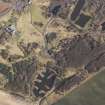
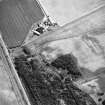


![View from laboratory block [K1] from N.](http://i.rcahms.gov.uk/canmore/s/SC02497687.jpg)
![Detail of 1 of several fireclay roof vents on top of magazine [M3].](http://i.rcahms.gov.uk/canmore/s/SC02497723.jpg)
![Hydraulic Pump House [N1]: view of hydraulic pumping machinery, including 1 of 2 G and J weir of Glasgow units in foreground, and 2 larger unidentified units in background, each powered by British Thomson Houston electric motors.](http://i.rcahms.gov.uk/canmore/s/SC02497736.jpg)
![Press house [P2]: view of Nitrocellulose press.](http://i.rcahms.gov.uk/canmore/s/SC02497739.jpg)

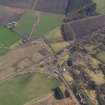



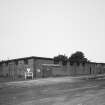
![View from SW of railway dispatch buildings [V1, V2 and V9], latterly converted for road transport. View also shows examples of bogeys used on narrow gauge railway throughout plant](http://i.rcahms.gov.uk/canmore/s/SC02497693.jpg)
![View from N of railway dispatch buildings [V1, V2 and V9] also showing typical example of electrical switchgear box and narrow gauge railway connecting most parts of the factory.](http://i.rcahms.gov.uk/canmore/s/SC02497695.jpg)
![View from ESE of recovered alcohol stand pipes and tanks, with still house [W4] behind.](http://i.rcahms.gov.uk/canmore/s/SC02497698.jpg)
![Elevated general view from ESE of incorporating and press houses [Z2 and P2 respectively], and hydraulic pump house [centre].](http://i.rcahms.gov.uk/canmore/s/SC02497703.jpg)
![View of coating and glazing house [C1] from NE.](http://i.rcahms.gov.uk/canmore/s/SC02497720.jpg)
![View from NW of magazine [M2].](http://i.rcahms.gov.uk/canmore/s/SC02497722.jpg)
![Elevated view from SE of stove house [S5] showing ventilator units.](http://i.rcahms.gov.uk/canmore/s/SC02497724.jpg)
![Hyrdaulic Pump House [N1]: view of hydraulic pumping machinery, comprising 2 large unidentified units, each powered by British Thomson Houston electric motors. Also in the building were 2 small G and J Weir hydraulic pumps. The hydraulic pipework and valves were supllied by Glenfield Kennedy of Kilmarnock, and the power from the engines was stored in 4 accumulators outside the building. Several nitrocellulose processes involved the use of hydraulically operated presses.](http://i.rcahms.gov.uk/canmore/s/SC02497735.jpg)

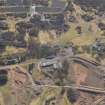





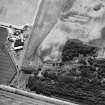

![General view from SE of press house [W1], also known as P4.](http://i.rcahms.gov.uk/canmore/s/SC02497696.jpg)
![General view from SW of ether plant [still house, W3], with surrounding tanks and pipes.](http://i.rcahms.gov.uk/canmore/s/SC02497701.jpg)
![View from NE of hydraulic plant/ pump house [N1].](http://i.rcahms.gov.uk/canmore/s/SC02497707.jpg)
![View of press house [P2] from E.](http://i.rcahms.gov.uk/canmore/s/SC02497708.jpg)
![View from S of press house [P2, left] and incorporating house [Z2, right].](http://i.rcahms.gov.uk/canmore/s/SC02497709.jpg)
![View from NW of steeping building [B3], also showing network of narrow-gauge railway linking parts of factory [diesel locomotive haulage].](http://i.rcahms.gov.uk/canmore/s/SC02497712.jpg)
![View from NE of expense store [X5].](http://i.rcahms.gov.uk/canmore/s/SC02497716.jpg)
![General view from SE of concrete water tower [J] and water filtration building [J2].](http://i.rcahms.gov.uk/canmore/s/SC02497717.jpg)
![Example of Stove House [S9]: view showing doorways to compartments, part of the trays contained in Compartment No 7, the path of brass-covered narrow-gauge railway line [tracks removed] and Veitchy-covered floor areas [a special surface which helps prevent sparks].](http://i.rcahms.gov.uk/canmore/s/SC02497732.jpg)




![View from NE of railway dispatch buildings [V1, V2 and V9] latterly converted for road transport.](http://i.rcahms.gov.uk/canmore/s/SC02497694.jpg)
![View from ESE of recovered alcohol stand pipes and tanks, with still house [W4] behind.](http://i.rcahms.gov.uk/canmore/s/SC02497699.jpg)
![General view from NE of still house [W4].](http://i.rcahms.gov.uk/canmore/s/SC02497700.jpg)
![Detailed view of entrance to steeping building [B3]](http://i.rcahms.gov.uk/canmore/s/SC02497713.jpg)
![General view from NE of sifting building [S4].](http://i.rcahms.gov.uk/canmore/s/SC02497719.jpg)
![Typical Tower Blending House [G5]: view of middle floor, showing feed hopper and central part of blending mechanism. All the apparatus is built from copper.](http://i.rcahms.gov.uk/canmore/s/SC02497729.jpg)
![Typical Tower Blending House [G5]: view of bottom floor, showing base of blending apparatus, all of which is constructed from copper. A secondary suspended hopper has been removed from the part of the machine, and can be seen separately on C/37577.](http://i.rcahms.gov.uk/canmore/s/SC02497730.jpg)
![Cotaing and Glazing House: detail of glazing machine [built from copper], used to coat nitrocellulose with graphite. The machine is driven by line shaft from a neighbouring motor house [with electric motors], and the machine is exactly the same type as those used to coat sweets in the confectionary industry.](http://i.rcahms.gov.uk/canmore/s/SC02497734.jpg)
![General view from NE of boilerhouse and railway sidings [standard gauge].](http://i.rcahms.gov.uk/canmore/s/SC02497683.jpg)
![General view from NE of Boilerhouse and Railway sidings [standard gauge].](http://i.rcahms.gov.uk/canmore/s/SC02497684.jpg)

![General view from SE of press house [W1], also known as P4.](http://i.rcahms.gov.uk/canmore/s/SC02497697.jpg)
![Detailed view from NE of curved entrance tunnel through baffle wall to stove house [S9].](http://i.rcahms.gov.uk/canmore/s/SC02497715.jpg)
![Typical Tower Blending House [G5]: view of middle floor, showing feed hopper, and central part of blending mechanism. All the apparatus is built from copper.](http://i.rcahms.gov.uk/canmore/s/SC02497728.jpg)
![Ether House [W3]: View on 1st floor, showing column of copper still [centre] and remains of adjacent tanks, pipes and control equipment. Part of the plant was rebuilt in 1941 by Bennett and Shearer Ltd of Birmingham, who may have moved it from the neighbouring plant at Gretna.](http://i.rcahms.gov.uk/canmore/s/SC02497737.jpg)
![Still house [W4]: view on 1st floor of 2 columns and surrounding pipework and plant.](http://i.rcahms.gov.uk/canmore/s/SC02497738.jpg)

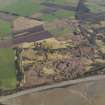

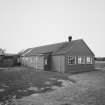
![Elevated general view from ESE of incorporating and press houses [Z2 and P2 respectively], and hydraulic pump house [centre].](http://i.rcahms.gov.uk/canmore/s/SC02497704.jpg)
![General view from SW of 2 pairs of hydraulic accumulator towers [2 high-pressure, and 2 low-pressure], outside the hydraulic plant house [N1].](http://i.rcahms.gov.uk/canmore/s/SC02497705.jpg)
![General view from SW of 2 pairs of hydraulic accumulator towers [2 high-pressure, and 2 low-pressure], outside the hydraulic plant house [N1].](http://i.rcahms.gov.uk/canmore/s/SC02497706.jpg)
![Side view of stove house [S9] from NE.](http://i.rcahms.gov.uk/canmore/s/SC02497714.jpg)
![Example of a steeping building [B3]: interior view showing tank, and narrow-gauge railway, with bogey outside far door.](http://i.rcahms.gov.uk/canmore/s/SC02497733.jpg)
![Press house [P2]: detailed view of Nitrocellulose press.](http://i.rcahms.gov.uk/canmore/s/SC02497740.jpg)



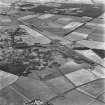
![General view from N of 2-storeyed blocks [31A] including former canteen.](http://i.rcahms.gov.uk/canmore/s/SC02497688.jpg)

![View from SW of railway dispatch buildings [V1, V2 and V9], latterly converted for road transport. View also shows examples of bogeys used on narrow gauge railway throughout plant.](http://i.rcahms.gov.uk/canmore/s/SC02497692.jpg)
![General view from SW of ether plant [still house, W3], with surrounding tanks and pipes.](http://i.rcahms.gov.uk/canmore/s/SC02497702.jpg)
![Elevated view of test ranges and laboratory [K3] from NW.](http://i.rcahms.gov.uk/canmore/s/SC02497721.jpg)


![Typical Tower Blending House [G5]: view of top floor, showing top of hopper, feeding blending mechanism below. All the apparatus is built from copper.](http://i.rcahms.gov.uk/canmore/s/SC02497727.jpg)
![Typical Tower Blending House [G5]: detail of suspended hopper forming part of bottom-floor, now dismantled and detached from machine [see C/37576].](http://i.rcahms.gov.uk/canmore/s/SC02497731.jpg)

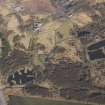

![View from S along SW side of press house [P2] showing black veitchy floor covering beneath canopy.](http://i.rcahms.gov.uk/canmore/s/SC02497710.jpg)
![View from S of tower blender building [G5].](http://i.rcahms.gov.uk/canmore/s/SC02497711.jpg)
![View from W over top of expense store [X5] showing lightning conductor poles around building [lightning conductors of X7 nearby also visible].](http://i.rcahms.gov.uk/canmore/s/SC02497718.jpg)
